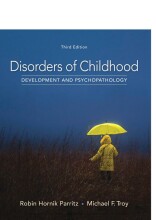Internalizing Disorders - Anxiety, Trauma & PTSD - Post Traumatic Stress Disorders
12 important questions on Internalizing Disorders - Anxiety, Trauma & PTSD - Post Traumatic Stress Disorders
What does the natural course of PTSD look like?
What are the types of trauma that have the highest risk of PTSD?
- Being held captive/tortured/kidnapped
- Rape
- Being badly beaten up
- Sexual assault
What are the types of trauma that have the lowest risk of PTSD?
- Military combat
- Discovering a dead body
- Life-threatening illness
- Higher grades + faster learning
- Never study anything twice
- 100% sure, 100% understanding
What are the criteria for PTSD?
- Experiencing a traumatic event
- The traumatic event is persistently re-experienced
- There is avoidance of trauma-related stimuli after the trauma
- The individual has negative thoughts or feelings that began or worsened after the trauma
- There is trauma-related arousal and reactivity that began or worsened after the trauma
In what ways can traumatic events be re-experienced?
- Unwanted upsetting memories
- Nightmares and/or flashbacks
- Emotional distress after exposure to traumatic reminders
- Physical reactivity after exposure to traumatic reminders
In what way can one experience negative thoughts or feelings that began or worsened after the trauma?
- Inability to recall key features of the trauma (quite a rare symptom)
- Overly negative thoughts or assumptions about oneself or the world
- Exaggerated blame of self or others for causing the trauma
- Negative affect
- Decreased interest in activities
- Feeling isolated
- Difficulty experiencing positive affect (feeling very numb, flattened mood)
In what ways can there be trauma-related arousal and reactivity that began or worsened after the trauma?
- Irritability or aggression
- Risky or destructive behavior
- Hyper-vigilance
- Heightened startle reaction
- Difficulty concentrating
- Difficulty sleeping
What are the 3 types of risk factors for PTSD?
- Pre-trauma risk factors
- Peri-trauma risk factors
- Post-trauma risk factors
What are pre-trauma risk factors?
- Genetic vulnerability
- Being female (2x the risk compared to males)
- Being younger
- Lower intelligence
- Low SES (economic status)
- Having experienced prior trauma
- Having prior psychiatric symptoms
Why are females more likely to have pre-trauma risk factors?
- Experiencing more interpersonal violence
- Possibly hormones
What are peri-trauma risk factors?
- Perceived threat
- Negative interpretation of event
- Physiological arousal
- Anger and shame
- Dissociation during the event
What are post-trauma risk factors?
- Lack of social support
- Coping styles
- Negative interpretation of the consequences of the event
- Exposure to new life events after the trauma
The question on the page originate from the summary of the following study material:
- A unique study and practice tool
- Never study anything twice again
- Get the grades you hope for
- 100% sure, 100% understanding































